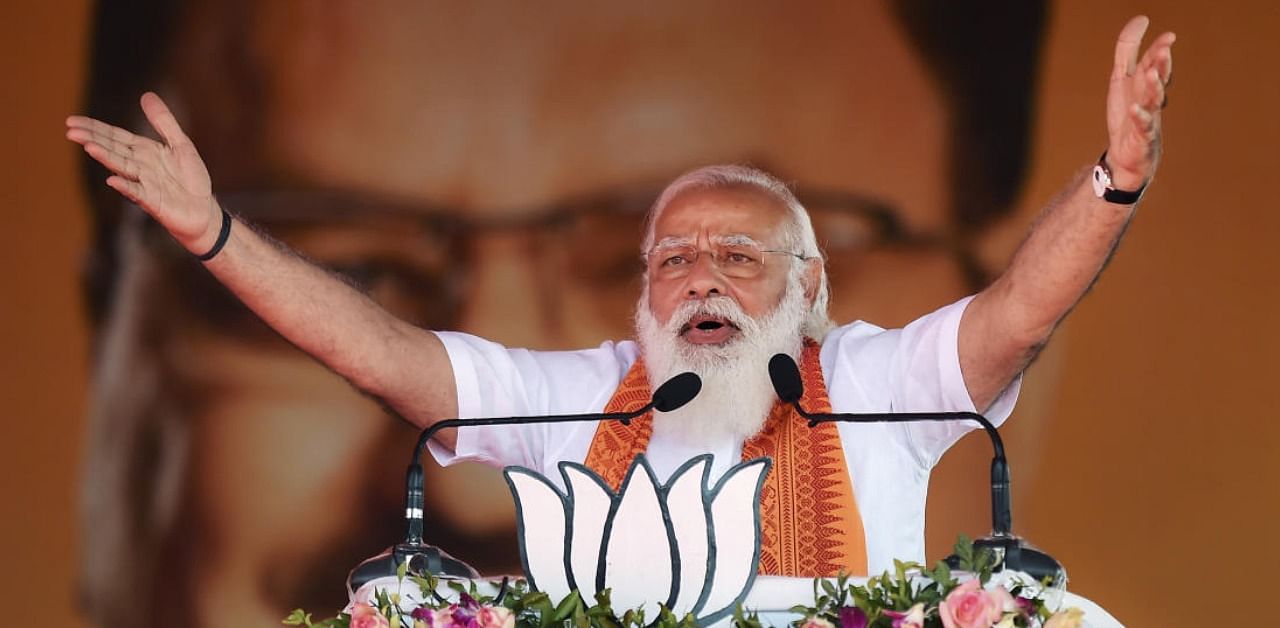
Prime Minister Narendra Modi appears to be set to take the Bharatiya Janata Party’s campaign to win away the “Epar Bangla” from Mamata Banerjee’s Trinamool Congress to “Opar Bangla” too.
Just a day before the first of the eight-phase polling for the assembly elections in West Bengal, often referred to as “Epar Bangla” (Bengal on This Side), will take place, the Prime Minister will embark on a two-day visit to Bangladesh a.k.a “Opar Bangla” (Bengal on the Other Side).
And, with his BJP already on a no-holds-barred campaign to wrest power from the Trinamool Congress in the State, the Prime Minister’s March 26-27 visit to the neighbouring country too is expected to be loaded with political messages to the voters in West Bengal.
The most conspicuous will be the one that will come out of his visit to Orakandi, a small town in Gopalganj district of Bangladesh.
The ‘Thakur Bari’ in Orakandi is the most sacred shrine for the Matuas – a Vaishnavite Hindu sect, which, with a population of over three crore in West Bengal, has emerged as a ‘vote-bank’ that the BJP is keen to win away from the TMC. Modi is likely to pay obeisance to the temple dedicated to Harichand Thakur, who founded the sect out of a reformist movement in the early 19th century. The sect comprised Namashudras, Chamars and Malis, who were then treated as untouchables by the upper caste Hindus of undivided Bengal.
Modi will meet his counterpart Sheikh Hasina in Dhaka. He will take part in the celebration of the birth centenary of Sheikh Mujibur Rahman, Hasina’s father and the founder of Bangladesh, in Dhaka.
A source told DH that although the Prime Minister’s itinerary in Bangladesh had not yet been finalized, he had conveyed to the officials his keenness to visit Thakurbari in Orakandi during his tour to the neighbouring country.
Harichand Thakur was born in Safaldanga in 1812, but spent most of his life and died in neighbouring Orakandi in 1878.
The Matuas grew in number in West Bengal as many of them migrated from erstwhile East Pakistan after the partition and continued to do so even after creation of Bangladesh in 1971. They now account for nearly 17% of the population of West Bengal and can influence the poll-results in 40-45 of the total 294 assembly constituencies in the State.
The Matuas of West Bengal have been a trusted support base for the TMC in the past several elections in the State. Mamata Banerjee, the Chief Minister of the State since 2011, had a very close relation with the matriarch of the community, Bina Pani Devi a.k.a “Boro Ma”, till the centenarian died in 2019. The BJP, however, has been trying to make a dent in the TMC’s vote-bank. The saffron party now has an MP from the community – Shantanu Thakur, one of the grandsons of “Boro Ma”.
Not only the Matuas, the Prime Minister’s visit to Bangladesh will also send out a message to the larger Bengali Hindu population in poll-bound West Bengal. He is likely to visit “Sugandha Shakti Peetha”, one of the 51 Shakti Peethas spread across the subcontinent and much revered by the Hindus.
In yet another bid to reach out to people of West Bengal, Modi is also likely to travel to Kushtia in Bangladesh to visit the ‘Shilaidaha Kuthi Bari’, which was built by Dwarakanath Tagore and where his Nobel Laureate son – Rabindra Nath Thakur – lived for many years. In Kushtia, the Prime Minister is also expected to visit the ancestral house of Jatindranath Mukhopadhyay, a.k.a ‘Bagha Jatin’, a revolutionary freedom fighter, who died a few days after being injured in an encounter with the police of British Raj in Balasore in Odisha in 1915.
